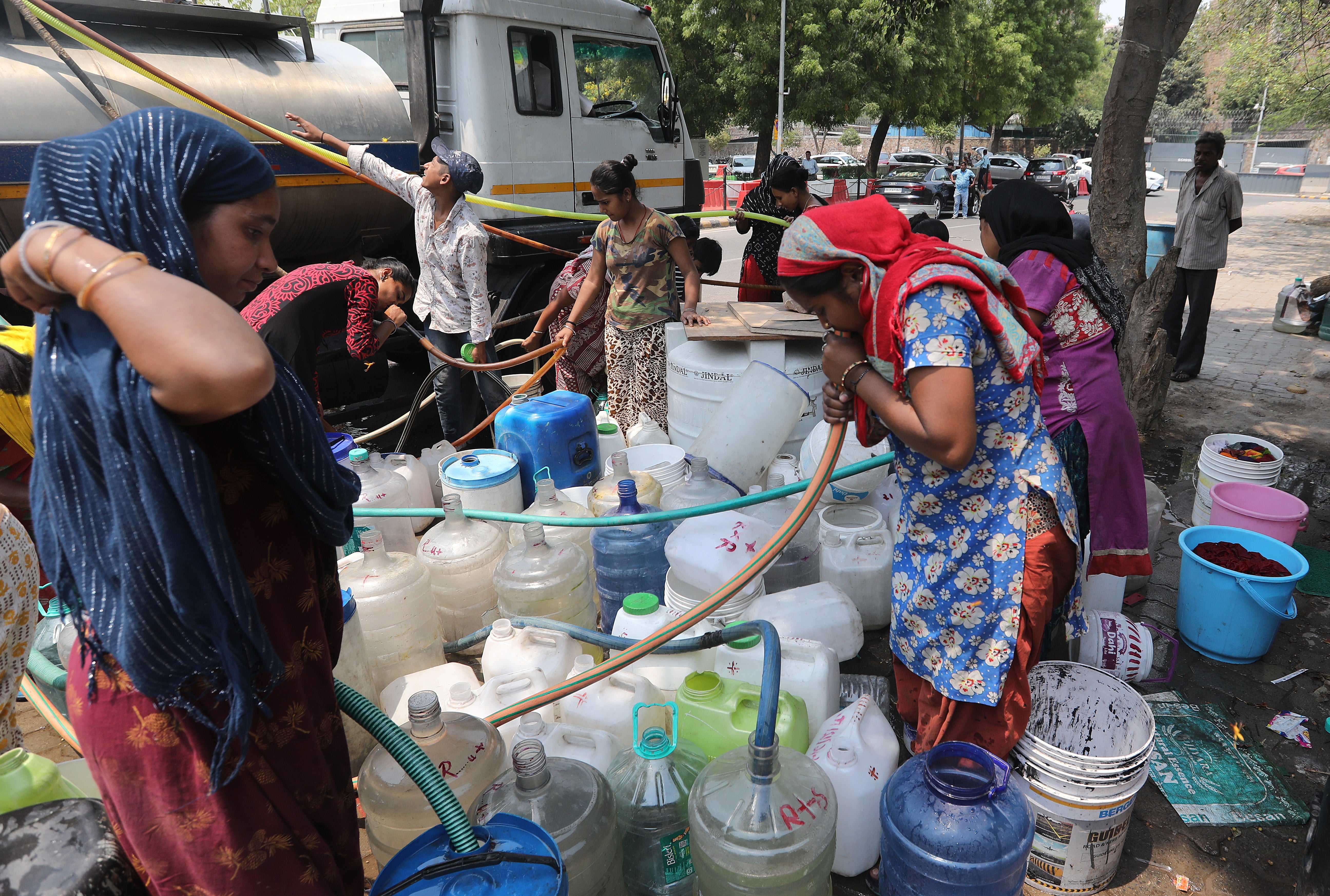‘Red alert’ in Delhi after temperature soars to 47C as heatwave grips India’s north
For second consecutive day on Sunday, parts of Delhi met heatwave conditions
Your support helps us to tell the story
From reproductive rights to climate change to Big Tech, The Independent is on the ground when the story is developing. Whether it's investigating the financials of Elon Musk's pro-Trump PAC or producing our latest documentary, 'The A Word', which shines a light on the American women fighting for reproductive rights, we know how important it is to parse out the facts from the messaging.
At such a critical moment in US history, we need reporters on the ground. Your donation allows us to keep sending journalists to speak to both sides of the story.
The Independent is trusted by Americans across the entire political spectrum. And unlike many other quality news outlets, we choose not to lock Americans out of our reporting and analysis with paywalls. We believe quality journalism should be available to everyone, paid for by those who can afford it.
Your support makes all the difference.A “red alert” was issued for India’s capital Delhi on Sunday as an intense heatwave gripped parts of northern India over the weekend.
For the second consecutive day on Sunday, parts of Delhi met heatwave conditions, with the maximum temperature hitting 46.8C in the northwest of the national capital region.
Red alerts are issued when unexpected weather consequences lead to a “very high likelihood of developing heat illness or stroke” as well as “serious health concerns for vulnerable people”, according to officials.
“Severe heatwave conditions are very likely in some parts of west Rajasthan during 17-20 May and in Punjab, Haryana and Delhi during 18-20 May,” the India Meteorological Department (IMD) announced on Saturday.
The IMD has issued orange alerts for Monday, Tuesday and Wednesday, stating that heatwave conditions are set to continue and residents needed to “be prepared” for possible symptoms of illness if they were exposed to the heat for prolonged periods.
Northern states like Haryana and Punjab are also expected to see “severe heatwave conditions”.
Rajasthan recorded a maximum temperature of 46C on Thursday as the heatwave days in April were the highest in 15 and nine years in the eastern states of West Bengal and Odisha respectively, according to IMD data. Parts of New Delhi recorded temperatures up to 47.1C on Friday.
The heatwave comes at the same time as India’s 6-week ongoing national elections, which has experts concerned as citizens wait in long lines to cast their votes.

Indian prime minister Narendra Modi and his primary challenger from the opposition Congress party, Rahul Gandhi, are both expected to hold rallies in New Delhi on Saturday evening.
The extreme heat has been at least partly blamed for the low voter turnout in the second phase of the national elections which saw polling across 13 states and union territories voting last week. It saw 63 per cent of those eligible voting, down further from the 66 per cent turnout in the first phase on 19 April.
Two people died from suspected heat stroke in the southern state of Kerala in April, where temperatures soared to 41.9C, nearly 5.5C above normal.
Since the beginning of April, dozens of countries in Asia from India to the Philippines have seen record-high temperatures leading to school closures and the triggering of urgent health warnings across the region.
A study conducted by scientists from World Weather Attribution (WWA), has found that this year’s heatwave would have been “virtually impossible” in the Philippines and a lot less extreme in South and West Asia without the climate crisis caused by burning oil, coal and gas.
The conditions for a heatwave are met in India when the maximum temperature of a weather station touches 40C in the plains, 37C in coastal areas, and 30C in hilly regions, or the departure from normal is at least 4.5 degrees. A severe heatwave is declared if the temperature is at least 6.4 degrees above normal.

April to June are usually the hottest months in most of India, but the country has seen more intense temperatures over the past decade, which leads to severe water shortages as well.
The Met department has warned that India could see more heatwave days between April and June this year than it normally does.

Join our commenting forum
Join thought-provoking conversations, follow other Independent readers and see their replies
Comments